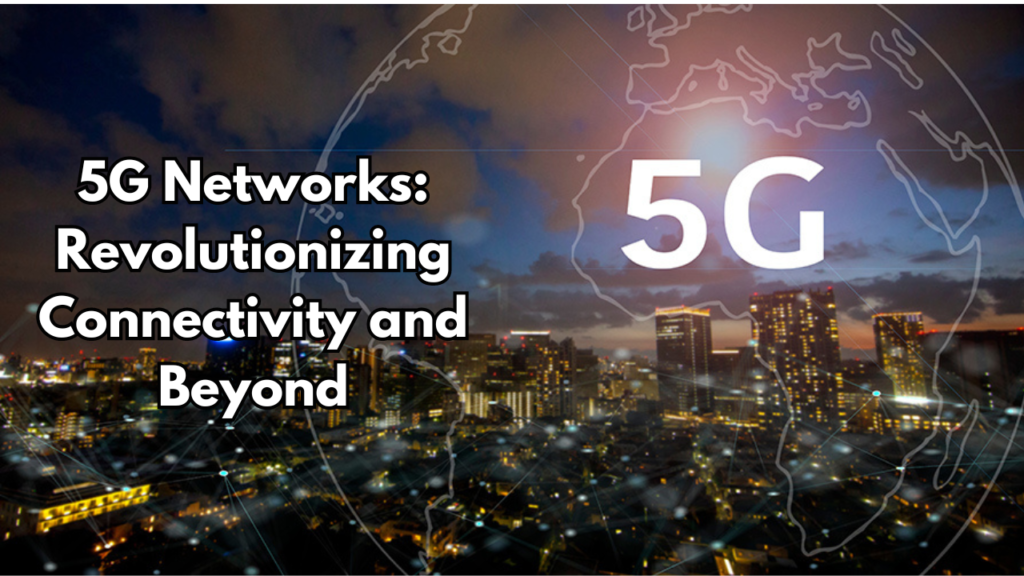
Table of Contents
In the ever-evolving landscape of technology, few innovations hold as much promise as 5G networks. This next-generation wireless technology is set to revolutionize connectivity, offering unprecedented speeds, reliability, and capabilities. But the impact of 5G extends far beyond faster download times and improved mobile experiences; it heralds a new era of digital transformation across various sectors. In this article, we will explore the key features of 5G networks, their implications for different industries, and the challenges that come with their implementation.
What is 5G Networks?
5G, the fifth generation of mobile networks, is the successor to 4G LTE (Long-Term Evolution). It is designed to offer higher data speeds, lower latency, and greater capacity than its predecessors. While 4G brought significant improvements over 3G, including faster internet and improved streaming quality, 5G takes these advancements to an entirely new level.
One of the most significant improvements with 5G is its speed. Theoretically, 5G can achieve download speeds of up to 10 gigabits per second (Gbps), which is up to 100 times faster than 4G LTE. This incredible speed enables faster data transfer, allowing for real-time applications and experiences that were previously unimaginable.
Another key feature of 5G is its ultra-low latency. Latency refers to the delay between sending and receiving data. 5G networks can reduce latency to as low as 1 millisecond, compared to 30-50 milliseconds with 4G. This near-instantaneous communication is crucial for applications requiring real-time feedback, such as autonomous vehicles and remote surgery.
Additionally, 5G networks offer greater capacity, meaning they can support a significantly higher number of connected devices simultaneously. This is essential as the number of Internet of Things (IoT) devices continues to grow, from smart home devices to industrial sensors.
Transforming Industries with 5G
- Healthcare
The healthcare sector stands to gain immensely from 5G technology. With its low latency and high bandwidth, 5G can enable real-time telemedicine and remote consultations. Surgeons can perform operations with the aid of robotic systems from different locations, while doctors can monitor patients through wearable devices that transmit data instantly.
Moreover, 5G can facilitate the rapid exchange of large medical files, such as high-resolution imaging and genomic data, enhancing diagnostics and personalized medicine. - Transportation
Autonomous vehicles are one of the most talked-about applications of 5G. These vehicles rely on instantaneous communication with their surroundings to navigate safely and efficiently. 5G’s low latency ensures that data from sensors and cameras is processed in real-time, which is crucial for making split-second decisions on the road.
Additionally, 5G can enhance public transportation systems by providing real-time updates on schedules, optimizing routes, and improving traffic management through smart infrastructure. - Manufacturing
In the manufacturing sector, 5G can drive the next wave of industrial automation. The technology enables the creation of smart factories where machines and robots communicate seamlessly with each other and with human operators. This connectivity can lead to increased efficiency, reduced downtime, and improved safety.
Furthermore, 5G’s high data speeds and low latency can support advanced technologies such as augmented reality (AR) and virtual reality (VR), which can be used for remote maintenance, training, and design. - Entertainment and Media
The entertainment industry is poised to benefit greatly from 5G. Enhanced streaming experiences, including 4K and 8K video, become more accessible with higher bandwidth. Additionally, 5G can support immersive experiences such as AR and VR, transforming gaming, live events, and virtual tours.
With 5G, users can also experience more interactive and responsive content, as well as new forms of media that leverage the technology’s capabilities. - Smart Cities
The concept of smart cities relies heavily on advanced connectivity. 5G can provide the infrastructure needed to support a wide array of IoT devices and sensors embedded throughout urban environments. This connectivity enables better management of resources, from optimizing energy consumption to improving waste management and enhancing public safety.
For instance, 5G can enable real-time monitoring of air quality, traffic flow, and public services, leading to more efficient and responsive city operations.
Challenges and Considerations
While 5G offers transformative potential, its deployment comes with challenges. One significant hurdle is the need for a dense network of small cells and antennas to support the higher frequencies used by 5G. This requires substantial investment in infrastructure and may face regulatory and logistical obstacles.
Additionally, there are concerns about the health impacts of increased radiofrequency exposure. Although current research indicates that 5G is safe within established guidelines, ongoing studies and monitoring are essential to ensure public health and safety.
Another consideration is the digital divide. As 5G technology rolls out, there is a risk that underserved areas may lag behind, exacerbating existing inequalities in access to high-speed internet. Addressing this divide will be crucial to ensure that the benefits of 5G are equitably distributed.
Finally, cybersecurity is a significant concern with the increased connectivity that 5G brings, especially as advancements in quantum computing pose new challenges. The expanded network of connected devices and systems creates more potential entry points for cyberattacks, and the potential for quantum computing to break traditional encryption methods intensifies these risks. Ensuring robust security measures and protocols, such as quantum-resistant algorithms, will be essential to protect data and maintain the integrity of 5G networks.
Conclusion
5G networks represent a monumental leap forward in wireless technology, with the potential to revolutionize connectivity and transform a wide range of industries. From healthcare and transportation to entertainment and smart cities, the impact of 5G will be far-reaching and profound.
However, the successful deployment and adoption of 5G will require addressing various challenges, including infrastructure development, health concerns, the digital divide, and cybersecurity. As we navigate these complexities, the promise of 5G offers an exciting glimpse into a future where connectivity drives innovation and enhances the quality of life across the globe.
